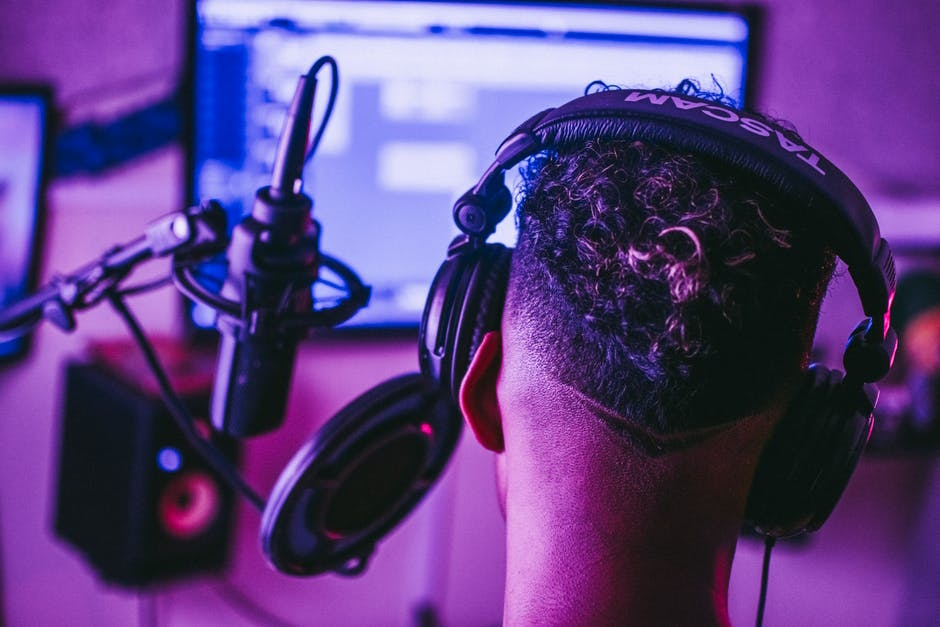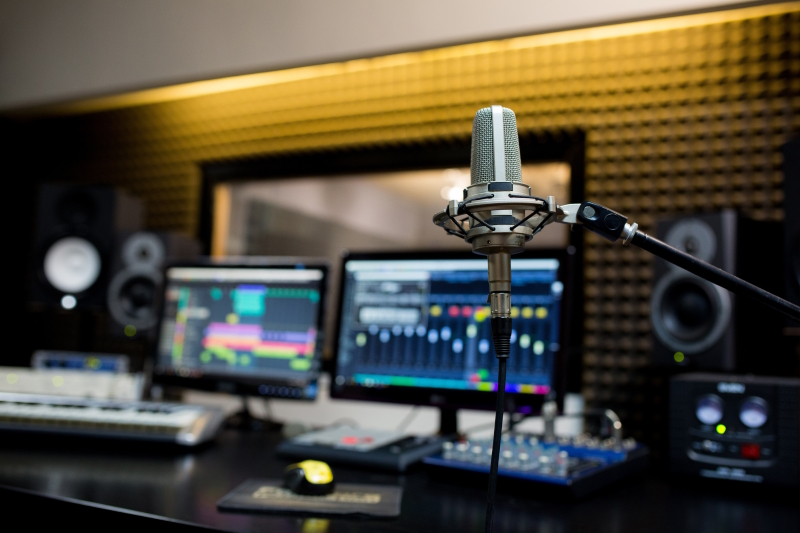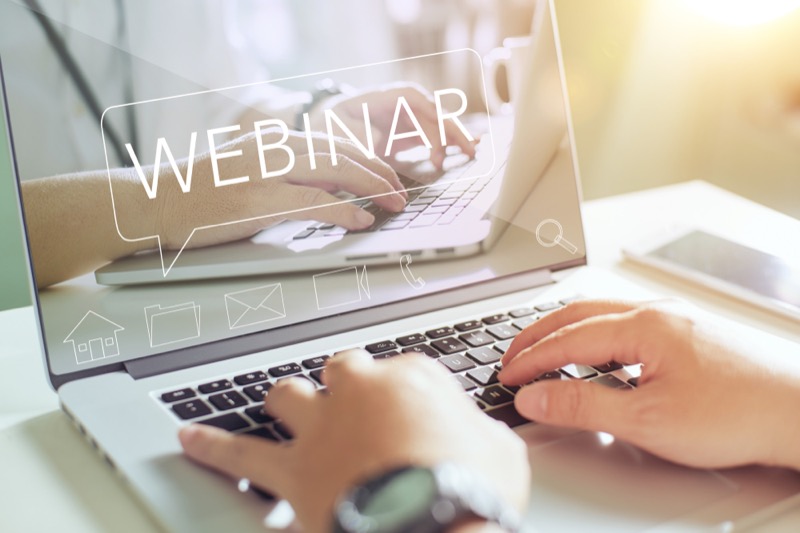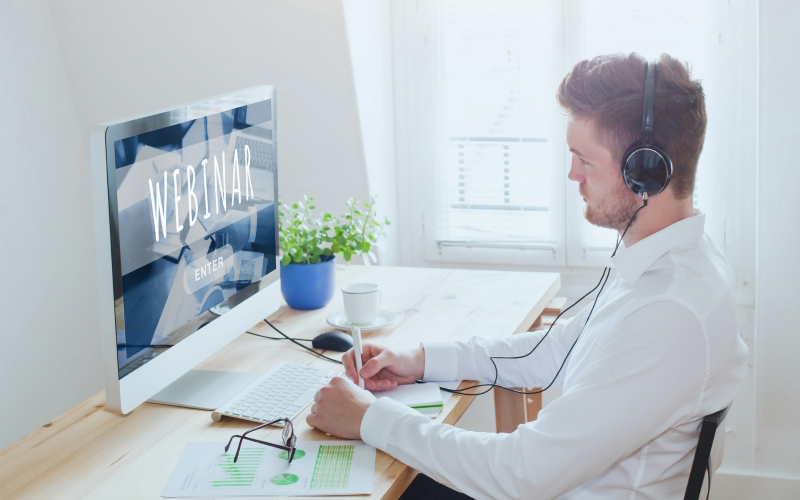10 Essential Tips for Recording Webinars
Video content has become, in many ways, the mainstay of the internet. If you only consider internet traffic, more than 80 per cent of it goes to...
4 min read
Gary Peebles
:
Jul 13, 2023 10:11:52 AM

One in six people worldwide has some form of disability. So it stands to reason accessibility should be a priority for any forward-thinking business.
An accessible webinar is essential to ensure all your audiences can attend and gain something from your content. In this article, we'll look at tips for recording webinars that are more inclusive for everyone.
We'll discuss the importance of closed captions, ensuring your content is suitable for people with hearing impairments, and the importance of clear visuals. Read on to learn how to make your webinars more inclusive and accessible.
Webinars are a great way to connect with people worldwide. But they must be accessible to everyone. Webinar accessibility means ensuring everyone can participate in the webinar, regardless of physical or mental abilities.
That includes:
Webinar accessibility is your way of showing your audience you have considered their needs. The more accessible your webinar will be, the more it will appeal to your potential customers.
Making your webinars accessible has many benefits. Let's examine a few of the most notable:
Having an accessible webinar shows you are an inclusive business. It shows that everyone is welcome, no matter what their disability.
It also helps people with disabilities feel respected and included, making them more likely to support the company with their time and money. Plus, being an inclusive business helps create a community where everyone can learn, grow, and succeed together.
An accessible webinar makes it easier for everyone to join and get involved. It opens up your business to a broader audience, meaning more people can learn about your products and services.
People with disabilities, for example, can now join the webinar and get the same information as everyone else. Accessible webinars have the potential to reach more people and help us grow your business.
Accessible webinars show that your brand is professional, thoughtful, and inclusive. Having accessible webinars communicates that you care about all your customers and want everyone to be able to participate.
This can help build a positive reputation and show that you are a brand that values people.
Accessible webinars help everyone understand the content, regardless of background or disability. This helps increase engagement from all viewers.
If you're using a webinar to boost sales, that can lead to a higher conversion rate and more revenue. More people will interact and continue to watch when you include everyone. So you'll get a boost to your ROI.
Now that you understand the benefits of accessible content, it's time to put a plan together. Here is how to design an accessible webinar.
Webinar captions are words that appear on the screen during a webinar to help people who are hard of hearing understand what is being said. Captions provide an essential way to make webinars more accessible.
Content transcripts are written versions of what is said during a webinar. Transcripts can help people who have difficulty understanding spoken words or need to read materials rather than listen.
Both captions and transcripts make webinars more inclusive and accessible. Take the time to write captions and transcriptions for your webinars. Some webinar technology will allow you to add automated captions.
Webinars can be made accessible to blind and low-vision audiences using simple steps. First, provide an audio description of the visuals used in the webinar.
Second, choose colours and fonts for an accessible presentation that are easy to see and read. Third, offer transcripts and captions of the webinar content.
Finally, allow people to ask questions and give feedback via online chat or email. All these steps will ensure everyone can participate and benefit from the webinar, regardless of their vision.
Making webinars available in multiple languages helps people worldwide understand and engage with your content. With translations, more people can access your webinars and benefit from the information.
You can use an online translation service or hire a professional translator to translate your webinars into other languages.
Ensure the translator is familiar with the topic and uses the same language throughout your webinar. They will then be able to translate your content accurately and effectively.
You can make your webinar more accessible by adding keyboard shortcuts. These are particular combinations of keys that can quickly access different features.
To make it easier to use, create a list of the shortcuts and post it somewhere visible during the webinar. This way, everyone can easily see and use the shortcuts.
You can assign a shortcut to each feature to make it even easier. Your audience won't need to remember the shortcut; they can press the right key to activate the feature.
Making webinar accessibility a broader part of your business starts with understanding the importance of providing equal access to all users.
Start by setting up a plan that looks at ways to make your webinars more accessible. Make sure you understand the needs of persons with disabilities and create webinars that are easy to use for everyone.
Update your webinar software to support features like captioning and voice options. Ensure your webinars are compatible with assistive technologies.
Train your team on creating inclusive webinars and provide clear instructions on using the features.
Finally, make sure to monitor and review the effectiveness of your webinar accessibility plan. By taking these steps, you can ensure everyone can enjoy and benefit from your webinars.
Recording webinars with accessibility in mind is a great way to guarantee that the content is available to everyone and that no one is excluded.
Doing this will help you reach more people and ensure all audience members can access the same resources. With proper preparation, you can create an enjoyable and informative webinar experience for everyone.
Did you know that you can turn your webinars into courses? Meet with us to find out more.

Video content has become, in many ways, the mainstay of the internet. If you only consider internet traffic, more than 80 per cent of it goes to...

Did you know that58% of the best resultsfor content marketing in the previous 12 months were created by webinars and online courses?

Around six in every ten business owners now use webinars. That means your competitors are likely using similar marketing tactics to you. So the...